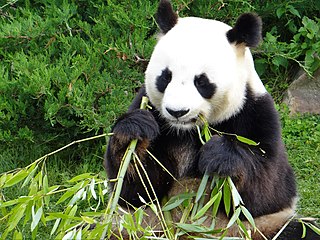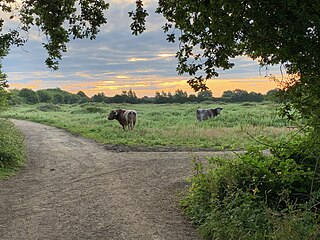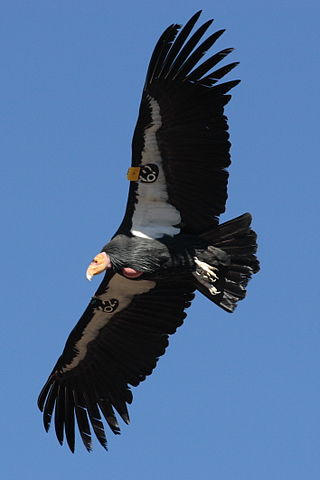Related Research Articles

The Convention on Biological Diversity (CBD), known informally as the Biodiversity Convention, is a multilateral treaty. The Convention has three main goals: the conservation of biological diversity ; the sustainable use of its components; and the fair and equitable sharing of benefits arising from genetic resources. Its objective is to develop national strategies for the conservation and sustainable use of biological diversity, and it is often seen as the key document regarding sustainable development.

The Great Otway National Park is a national park located in the Barwon South West region of Victoria, Australia. The 103,185-hectare (254,980-acre) national park is situated approximately 162 kilometres (101 mi) southwest of Melbourne, in the Otway Ranges, a low coastal mountain range. It contains a diverse range of landscapes and vegetation types.
This is an index of conservation topics. It is an alphabetical index of articles relating to conservation biology and conservation of the natural environment.

Conservation biology is the study of the conservation of nature and of Earth's biodiversity with the aim of protecting species, their habitats, and ecosystems from excessive rates of extinction and the erosion of biotic interactions. It is an interdisciplinary subject drawing on natural and social sciences, and the practice of natural resource management.

A keystone species is a species that has a disproportionately large effect on its natural environment relative to its abundance, a concept introduced in 1969 by the zoologist Robert T. Paine. Keystone species play a critical role in maintaining the structure of an ecological community, affecting many other organisms in an ecosystem and helping to determine the types and numbers of various other species in the community. Without keystone species, the ecosystem would be dramatically different or cease to exist altogether. Some keystone species, such as the wolf, are also apex predators.

Habitat conservation is a management practice that seeks to conserve, protect and restore habitats and prevent species extinction, fragmentation or reduction in range. It is a priority of many groups that cannot be easily characterized in terms of any one ideology.
An ecological or environmental crises occurs when changes to the environment of a species or population destabilizes its continued survival. Some of the important causes include:

Forestation is a vital ecological process where forests are established and grown through afforestation and reforestation efforts. Afforestation involves planting trees on previously non-forested lands, while reforestation focuses on replanting trees in areas that were once deforested. This process plays an important role in restoring degraded forests, enhancing ecosystems, promoting carbon sequestration, and biodiversity conservation.

Wildlife conservation refers to the practice of protecting wild species and their habitats in order to maintain healthy wildlife species or populations and to restore, protect or enhance natural ecosystems. Major threats to wildlife include habitat destruction, degradation, fragmentation, overexploitation, poaching, pollution, climate change, and the illegal wildlife trade. The IUCN estimates that 42,100 species of the ones assessed are at risk for extinction. Expanding to all existing species, a 2019 UN report on biodiversity put this estimate even higher at a million species. It is also being acknowledged that an increasing number of ecosystems on Earth containing endangered species are disappearing. To address these issues, there have been both national and international governmental efforts to preserve Earth's wildlife. Prominent conservation agreements include the 1973 Convention on International Trade in Endangered Species of Wild Fauna and Flora (CITES) and the 1992 Convention on Biological Diversity (CBD). There are also numerous nongovernmental organizations (NGO's) dedicated to conservation such as the Nature Conservancy, World Wildlife Fund, the Wild Animal Health Fund and Conservation International.

Plantlife is a wild plant conservation charity. As of 2023, it manages 24 nature reserves around the United Kingdom. HM King Charles III is patron of the charity.
The following outline is provided as an overview of and topical guide to ecology:

A biodiversity action plan (BAP) is an internationally recognized program addressing threatened species and habitats and is designed to protect and restore biological systems. The original impetus for these plans derives from the 1992 Convention on Biological Diversity (CBD). As of 2009, 191 countries have ratified the CBD, but only a fraction of these have developed substantive BAP documents.
An endangered species recovery plan, also known as a species recovery plan, species action plan, species conservation action, or simply recovery plan, is a document describing the current status, threats and intended methods for increasing rare and endangered species population sizes. Recovery plans act as a foundation from which to build a conservation effort to preserve animals which are under threat of extinction. More than 320 species have died out and the world is continuing a rate of 1 species becoming extinct every two years. Climate change is also linked to several issues relating to extinct species and animals' quality of life.
Gap analysis is a tool used in wildlife conservation to identify gaps in conservation lands or other wildlands where significant plant and animal species and their habitat or important ecological features occur.

Umbrella species are species selected for making conservation-related decisions, typically because protecting these species indirectly protects the many other species that make up the ecological community of its habitat. Species conservation can be subjective because it is hard to determine the status of many species. The umbrella species is often either a flagship species whose conservation benefits other species or a keystone species which may be targeted for conservation due to its impact on an ecosystem. Umbrella species can be used to help select the locations of potential reserves, find the minimum size of these conservation areas or reserves, and to determine the composition, structure, and processes of ecosystems.
Ecological extinction is "the reduction of a species to such low abundance that, although it is still present in the community, it no longer interacts significantly with other species".

Global biodiversity is the measure of biodiversity on planet Earth and is defined as the total variability of life forms. More than 99 percent of all species that ever lived on Earth are estimated to be extinct. Estimates on the number of Earth's current species range from 2 million to 1 trillion, but most estimates are around 11 million species or fewer. About 1.74 million species were databased as of 2018, and over 80 percent have not yet been described. The total amount of DNA base pairs on Earth, as a possible approximation of global biodiversity, is estimated at 5.0 x 1037, and weighs 50 billion tonnes. In comparison, the total mass of the biosphere has been estimated to be as much as 4 TtC (trillion tons of carbon).

Rewilding is a form of ecological restoration aimed at increasing biodiversity and restoring natural processes. It differs from ecological restoration in that, while human intervention may be involved, rewilding aspires to reduce human influence on ecosystems. It is also distinct in that, while it places emphasis on recovering geographically specific sets of ecological interactions and functions that would have maintained ecosystems prior to human influence, rewilding is open to novel or emerging ecosystems which encompass new species and new interactions.

A large proportion of living species on Earth live a parasitic way of life. Parasites have traditionally been seen as targets of eradication efforts, and they have often been overlooked in conservation efforts. In the case of parasites living in the wild – and thus harmless to humans and domesticated animals – this view is changing. The conservation biology of parasites is an emerging and interdisciplinary field that recognizes the integral role parasites play in ecosystems. Parasites are intricately woven into the fabric of ecological communities, with diverse species occupying a range of ecological niches and displaying complex relationships with their hosts.

Biodiversity loss includes the worldwide extinction of different species, as well as the local reduction or loss of species in a certain habitat, resulting in a loss of biological diversity. The latter phenomenon can be temporary or permanent, depending on whether the environmental degradation that leads to the loss is reversible through ecological restoration/ecological resilience or effectively permanent. The current global extinction, has resulted in a biodiversity crisis being driven by human activities which push beyond the planetary boundaries and so far has proven irreversible.
References
- 1 2 "State of the World's Plants and Fungi | Kew". www.kew.org. Retrieved 2023-03-31.
- ↑ May, Tom W.; Cooper, Jerry A.; Dahlberg, Anders; Furci, Giuliana; Minter, David W.; Mueller, Gregory M.; Pouliot, Alison; Yang, Zhuliang (2018). "Recognition of the discipline of conservation mycology". Conservation Biology. 33 (3): 733–736. doi:10.1111/cobi.13228. PMID 30264893. S2CID 52876429.
- 1 2 "Benefits of Fungi for the Environment and Humans". UN Decade on Restoration. Retrieved 2023-03-16.
- ↑ "8.14: Symbiotic Relationships of Fungi". Biology LibreTexts. 2016-09-30. Retrieved 2023-03-16.
- 1 2 3 4 "How plants make friends with fungi". ScienceDaily. Retrieved 2023-03-16.
- ↑ "Underground Networking: The Amazing Connections Beneath Your Feet". www.nationalforests.org. Retrieved 2023-03-16.
- ↑ "How the Red List is Used". IUCN Red List. March 22, 2023. Retrieved March 22, 2023.
{{cite web}}: CS1 maint: url-status (link) - 1 2 3 4 Molina, Randy; Horton, Thomas R.; Trappe, James M.; Marcot, Bruce G. (2011-04-01). "Addressing uncertainty: How to conserve and manage rare or little-known fungi". Fungal Ecology. Conservation Underground: Fungi in a Changing World. 4 (2): 134–146. doi:10.1016/j.funeco.2010.06.003. ISSN 1754-5048.
